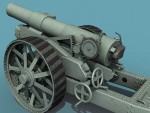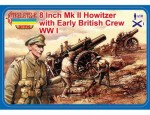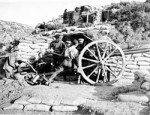RUNDLE, Walter Henry
Walter Henry Rundle was the only son of Henry Philip Rundle and Jessie Maria Honeyman. He ahd an elder sister, Florence, born in 1891. The family lived in Launceston, Tasmania, where his father was an engine driver. Walter Rundle was a carpenter by trade, Single, aged 22 years and eight months when he joined up on 5 May, 1916, in Melbourne. He was then living at 6 Vale St.,East Melbourne.
He was called up on 23 May and sent to camp at Maribynong, where he joined the Field Artillers Brigade Reinforcements for training. On 19 September, he was attached to the 25 Howitzer Brigade, 6th Reinforcements. They left Melbourne on 20 October, on board HMAT Borda A30, bound for Plymouth, England, where they arrived in early February, marching in to No 3 Camp at Park House on 4 February. 1917. From there, they were moved to Camps 21 and 21 at Lark Hill, in preparation for leaving for France and the Western Front.
Walter Rundle had, by now, been assigned as a Driver for the 14th Field Artillery Brigade, rather than the 25th Howitzer Brigade.This was because the artillery brigades had been reorganised in January 1917. Each Field Artillery Brigade had 12 x 18 pound guns and 4 x 4.5 howitzers, but because there were not enough howitzers batteries, the 9th, 12th,15th and 22 nd Field Artillery Brigades had no howitzers. The 14th FAB embarked for France on 14 March, 1917, landing at Etaples and were attached to the 5th Division Field Artillery Battery. On 5 April, 1917, Walter Rundle was taken on strength as a driver with the 14th FAB and posted to the 53rd Battery.
By then, the Fifth Division was engaged in the advance on the Hindenburg Line and it was at this point that Walter Rundle served on the front line. The 5th Division took part in the Arras offensive on 9 April, struggling through sleet and snow to capture Vimy Ridge. He would also have taken part n the Battle of Bullecourt on April 9, as the German troops were slowly pushed back. On 4 May, he was wounded, with a gunshot wound to one thumb which put him out of action. Although the wound was later assessed as mild, he was taken to the 33rd Field Ambulance, then hospital at Rouen and finally sent back to England on HMS St David on 13 May, 1917. On release, he was given furlough from 22 August to 5 September.
He marched in to No 1 Convalescent Depot at Perham Downs early, arriving on 3 September. By May, 1918, he was ill again, this time with influenza. He was declared clear on 23 May and on 23 September, was sent back to France, rejoining his unit on 5 October. By now, the war was very nearly over, with Germany surrendering on 11 November. The 5th Division, of which the 14 FAB was part, had been in the front line on September, 1918, when the Australian troops reached the Hindenburg line. ON 19 September, they had fought laongside the US 27 and 29 Divisions and by 1 October, had captured the Hindenburg Line trench system. Following this, they were relieved by the 2nd Division and on 5 October, 1918, the Australians handed over their line to the US 11 Corps troops. The 5th Division was withdrawn to the French coast for a rest until the end of the war only a week later.
Following the war came the clearing up and the slow repatriation of troops. It wasn't until 18 March, 1918, that Walter Rundle was detached fro the 14 Field Artillery Brigade. He was sent back to England from France, then was granted extended leave on 12 April. He reported back to Perham Downs and was then assigned to AIF Headquarters in London as a driver, T/2/Corporal. His final service was at Sutton Veny, where he was taken on strength at Sutton Veny. He returned to Australia on the Nestor, on 15 December 1919 and was finally discharged from the AIF on 21 January, 1920.
From 1924 to at least 1936, he lived in East Melbourne, first at 50 Berry St., then at 43 Wellington Parade and, in 1936, at 41 Wellington Parade. At some time between 1924 and 1931, he married Leone Dena Church, known as Dena (1894-1946) . He was working as a carpenter. By 1943, they had moved to St. Kilda, to 14 Alfred St., with Walter now a joiner. He stayed here until 1963. Walter died at St. Kilda in 1965, aged 71.
Australian War Memorial Embarkation Roll
Australian National Archives Service Record
Ancestry.com.au, Public member Trees, Electoral Rolls, Births, Deaths and Marriages
Photographs Australian War Memorial 3rd Field Artillery Battalion; www.turbosquid Photo of Howitzer gun; Google Images poster 8" Mark 11 Howitzer with early British Crew
Google Wikipaedia 5th Division AIF



